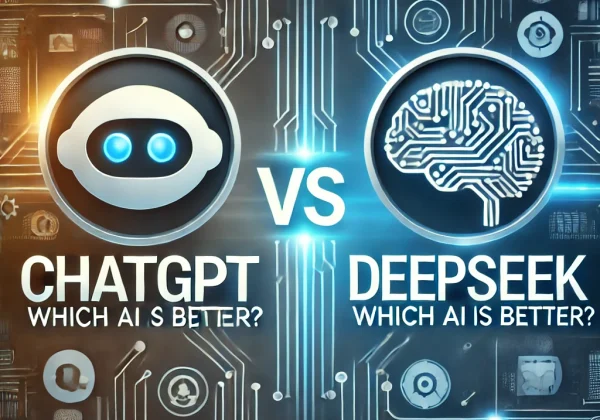
Artificial Intelligence (AI) has revolutionized the way we interact with technology, and tools like ChatGPT and DeepSeek are prime examples of how AI can transform industries. If you’re inspired to develop a similar AI-powered tool, this guide will walk you through the key steps to get started.
1. Understand the Core Technology
Before diving into development, it’s essential to understand the foundational technologies behind tools like ChatGPT and DeepSeek:
• Natural Language Processing (NLP): NLP enables machines to understand, interpret, and generate human language.
• Machine Learning (ML) and Deep Learning: These are the backbone of AI models, allowing them to learn from data and improve over time.
• Transformer Architecture: Models like GPT (Generative Pre-trained Transformer) use this architecture, which is highly effective for text generation and understanding.
Familiarize yourself with these concepts through online courses, research papers, or tutorials.
2. Define Your Tool’s Purpose and Use Cases
What problem will your tool solve? Define its purpose clearly. For example:
• ChatGPT: Focuses on conversational AI, answering questions, and generating human-like text.
• DeepSeek: May specialize in data analysis, insights, or other specific applications.
Identify your target audience and use cases, such as customer support, content creation, or data analysis.
3. Gather and Prepare Data
AI models require vast amounts of high-quality data to train effectively. Steps to consider:
• Data Collection: Gather text data from diverse sources like books, articles, and websites.
• Data Cleaning: Remove noise, duplicates, and irrelevant information.
• Data Annotation: Label data if your tool requires supervised learning.
Ensure your data is ethical, unbiased, and complies with privacy regulations like GDPR.
________________________________________
4. Choose the Right Framework and Tools
Select the tools and frameworks that align with your development goals:
• Programming Languages: Python is the most popular choice for AI development.
• Frameworks: Use libraries like TensorFlow, PyTorch, or Hugging Face’s Transformers.
• Pre-trained Models: Leverage existing models like GPT-3, BERT, or T5 to save time and resources.
________________________________________
5. Develop and Train Your Model
• Model Architecture: Decide whether to build your model from scratch or fine-tune an existing one. For example, GPT-based models use transformer architecture.
• Training: Train your model on the prepared dataset. This step requires significant computational power, so consider using cloud platforms like AWS, Google Cloud, or Azure.
• Evaluation: Test your model’s performance using metrics like accuracy, perplexity, and F1 score.
________________________________________
6. Optimize for Performance and Scalability
• Fine-tuning: Improve your model’s performance by fine-tuning it on specific tasks or datasets.
• Scalability: Ensure your tool can handle increasing user demands by optimizing code and infrastructure.
• Latency Reduction: Minimize response times for a better user experience.
7. Incorporate Ethical AI Practices
AI tools must be developed responsibly. Consider:
• Bias Mitigation: Ensure your model doesn’t perpetuate harmful biases.
• Transparency: Make it clear when users are interacting with an AI.
• Privacy: Protect user data and comply with relevant regulations.
8. Build a User-Friendly Interface
Your tool’s success depends on how easily users can interact with it.
• APIs: Create APIs for developers to integrate your tool into their applications.
• UI/UX Design: Design an intuitive interface if your tool is standalone.
• Documentation: Provide clear instructions and examples for users.
9. Test and Iterate
• Beta Testing: Release a beta version to gather user feedback.
• Continuous Improvement: Use feedback to refine your tool and add new features.
• Monitoring: Track performance and usage to identify areas for improvement.
10. Launch and Market Your Tool
Once your tool is ready, launch it to the public.
• Marketing Strategy: Use social media, blogs, and partnerships to promote your tool.
• Community Building: Engage with users and developers to create a loyal community.
• Monetization: Explore revenue models like subscriptions, pay-per-use, or enterprise licensing.
Challenges to Anticipate
• High Computational Costs: Training AI models requires significant resources.
• Data Privacy Concerns: Ensure compliance with data protection laws.
• Competition: Differentiate your tool by focusing on unique features or niche applications.
Final Thoughts
Developing a tool like ChatGPT or DeepSeek is a challenging but rewarding endeavor. By understanding the technology, defining clear goals, and following ethical practices, you can create an AI tool that stands out in the market.
Are you ready to embark on this journey? Share your thoughts or questions in the comments below!
#AI #ArtificialIntelligence #ChatGPT #DeepSeek #TechInnovation #MachineLearning #NLP
